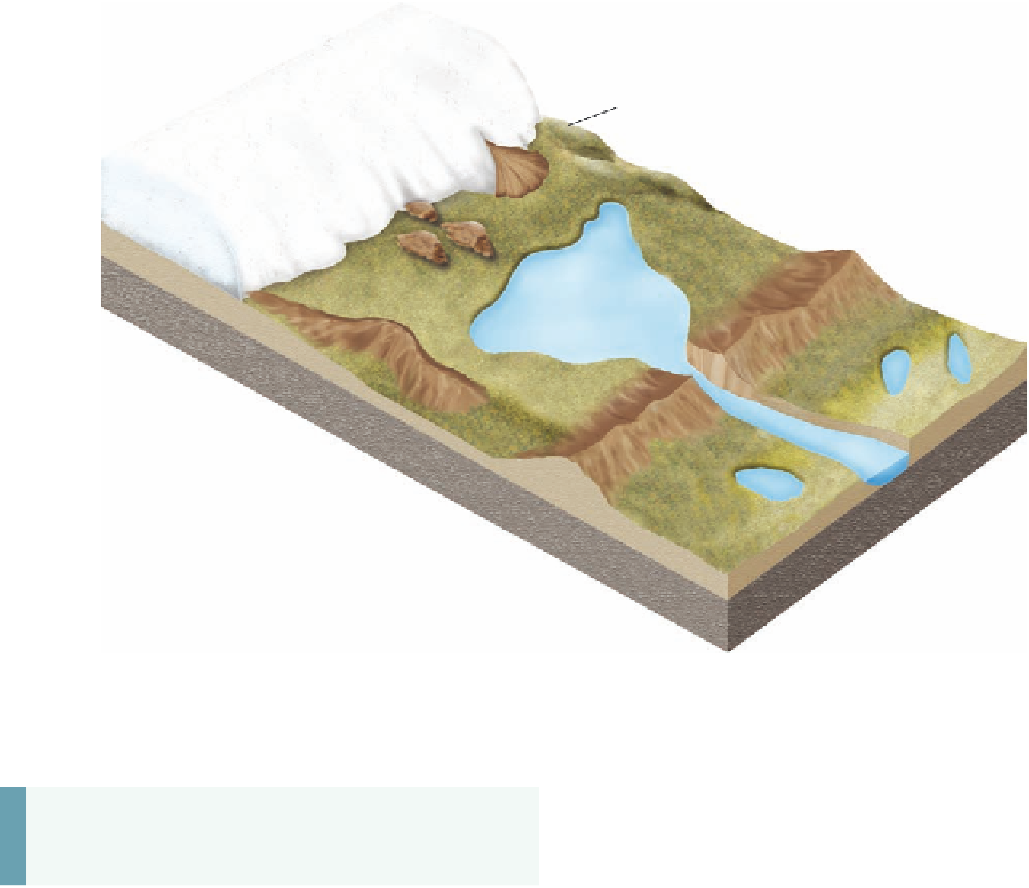Geoscience Reference
In-Depth Information
Drumlins
Kame
Receding
glacier
Terminal
moraine
G
l
a
c
i
a
l
d
r
i
f
t
Kettle lakes
Esker
Roches
moutonnées
Meltwater lake
Kettle lake
Outwash
plain
Figure 17.20 Generalized depositional landforms associated with glaciation.
Note the essential forms and
geographic relationships of these landscape features.
Deposition of Glacial Drift
and Resulting Landforms
Now that we have examined the landforms created by glacial
erosion, let's consider those constructed through glacial deposi-
tion. As you study this section of the text, refer frequently to
Figure 17.20, which shows most of the landforms discussed as
well as their fundamental geographical relationships.
KEY CONCEPTS TO REMEMBER ABOUT
GLACIAL EROSION AND RESULTING
LANDFORMS
1.
Glaciers erode through the processes of abrasion (grind-
ing rock) and plucking (pulling rock from the ground).
2.
Glacial striations and grooves are produced through
abrasion.
Glacial Till
Sediment deposited by a glacier is called
glacial
drift
and is found in two general forms: glacial till and glacial out-
wash.
Glacial till
is sediment that is deposited directly by a gla-
cier. This form of glacial drift typically contains many different
particle sizes, ranging from clay to sand and even cobbles and
small boulders. As a result, it is considered to be an unsorted de-
posit because it is a mix of many different sediment sizes.
One form of glacial till is
basal till
(or
lodgement
till
),
which is deposited at the base of the glacier in way that is some-
what analogous to the way peanut butter is smeared onto bread
with a knife. A glacier deposits basal till in somewhat the same
way and can do so either as the glacier advances or retreats. Be-
cause of the intense pressure at the base of the glacier, due to the
weight of the ice, basal till is usually quite dense and relatively
fine-grained because it has been ground and crushed.
3.
A roche moutonnée is a streamlined bedrock landform
produced by the combined processes of abrasion (on
the upstream side) and plucking (on the lee side).
4.
Extensive glacial erosion occurs in alpine regions. In
general, a preglacial landscape is converted to one
that is more angular, with sharper ridges, after glacia-
tion. Resulting landforms include cirques, tarns, arêtes,
horns, troughs, hanging valleys, and waterfalls.
Sediment deposited directly by a glacier.
Sediment deposited indirectly or directly by a
Glacial till
Glacial drift
glacier.







